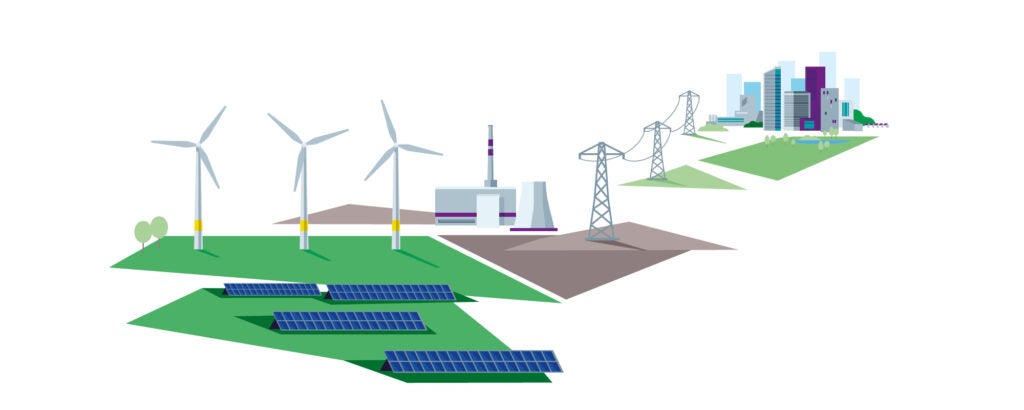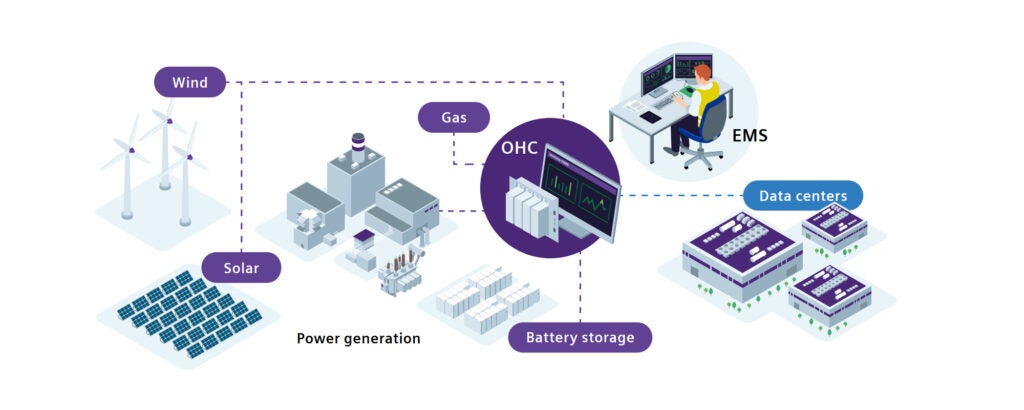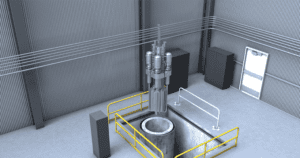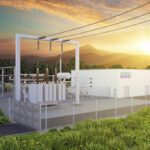
We’re at a crossroads: the demand for clean energy is urgent, while energy consumption is surging—driven by AI and power-hungry data centers. The energy landscape is growing more complex, cyberattacks are increasing, regulations are tightening, and skilled specialists are in short supply.
Power plant operators are navigating diverse challenges while needing to maintain a reliable energy supply and ensure profitability. The transition to clean energy often leads to hybrid plant configurations, adding further complexity to operations.

Hybrid plants combine multiple energy sources—typically renewables like wind or solar, battery storage, and conventional backup—into a single coordinated system. Hybrid power is expanding rapidly throughout the world and is governed by both technology and regulation. Stricter global grid codes are pushing developers to adopt hybrid strategies that integrate renewables, storage, and grid services as a forward-looking solution to modern energy generation, transmission, and regulation.
Integrated control solutions for hybrid plants, such as Siemens Energy’s Omnivise Hybrid Control (OHC), cut through today’s energy complexity by seamlessly integrating diverse sources to deliver reliable, efficient, and clean power. OHC provides a comprehensive control framework suited allowing operators to manage hybrid plants secure and most effectively.
The growing value of an integrated control system
Harnessing energy from hybrid sources all imposes different demands on operators and the utility of such energy sources. As the share of renewable energy grows, intelligent control becomes essential for efficient, reliable, and flexible operation. It is imperative to utilize a robust integrated control system that orchestrates all power sources according to available power supply and demand for such power.
Hybrid plants are complex ecosystems that must integrate and coordinate multiple subsystems, each with distinct dynamic behaviors. These subsystems often originate from different technologies, vendors, or operational philosophies—and they typically don’t align seamlessly when using conventional control and monitoring approaches.
The overall control system must manage optimal load sharing, smooth transitions between modes, and handle fluctuations, especially when renewables are involved. Real-time communication and data exchange between subsystems add further challenges.
You need to keep up with regulatory complexity
The need for integrated control, along with consultation from a knowledgeable trusted partner such as Siemens Energy is essential to managing a growing challenge to comply with codes and regulations imposed by different nations and localities throughout the world. For example:
- Brazil has formalized hybrid generation rules
- Mexico now requires new solar and wind projects to include at least 30% battery storage for reliability
- Indonesia is drafting a renewable energy law to encourage hybrid adoption, signaling a broader policy shift toward flexible, multi-technology systems
- Spain’s Royal Decree-Law allows renewables and storage to share grid connections and lets existing plants add new technologies without reapplying for access
- Denmark enforces grid codes aligned with EU standards to ensure stability, while
- Australia’s AEMO now requires all hybrid plants in its National Electricity Market to register and comply with National Electricity Rules
Why even data centers need to think smart
In addition to the need for integrated control for various hybrid plants, data centers, driven by growth from the use of artificial intelligence and high-performance computing, are highly energy-intensive, requiring constant power with uncompromising reliability. Traditional dependence on grid supply and diesel backup is increasingly unsustainable as demand surges from cloud, AI, and digital infrastructure.

A closer look at Siemens Energy’s Omnivise control solutions for hybrid power operations
Siemens Energy’s Omnivise Hybrid Control (OHC) simplifies the complexity of hybrid power plants and microgrids by uniting renewables, conventional power, and storage under one intelligent platform. It synchronizes diverse assets—such as wind, solar PV, hydrogen, battery storage, and synchronous condensers—to ensure grid stability, reliability, and regulatory compliance. OHC manages real-time operations with integrated automation and communications while being vendor-agnostic.
OHC maintains the electrical stability within the microgrid and—supported by built-in substation automation features—it ensures grid code compliance at the POI (point of interconnection).
Integrated controls for hybrid power plants: Together with EMS (Energy Management System) and SCADA, Omnivise Hybrid Control (OHC) covers even the most challenging hybrid plant applications and setups.
A robust SCADA (Supervisory Control and Data Acquisition) system provides dashboards, alarms, and data logging for full transparency. The SCADA application server facilitates centralized supervision, data acquisition, and visualization, offering operators a comprehensive view of plant performance.
The Energy Management System (EMS) uses forecasts and market data to deliver cost-optimized schedules and real-time adjustments. Using its dispatch optimization, the EMS ensures optimal energy flows, balancing demand and supply while maximizing the efficiency of hybrid operations.
Get started with the Omnivise portfolio
Siemens Energy’s Omnivise Hybrid Control, combined with the SCADA application server and Energy Management System (EMS) offers a comprehensive solution to meet hybrid challenges head-on.
In partnering with Siemens Energy, you gain a trusted partner with decades of expertise in power plant automation, proven success in global hybrid projects, and a steadfast commitment to cybersecurity and digitalization.
Learn more: Hybrid power plants | Intelligent Control with Omnivise
Download the white papers:









